Elvis, Lady Gaga, McFly, Take That, Ed Sheeran, Snow Patrol, Bruno Mars. The list goes on and the songs keep coming. Anthony Horricks and Friends ‘Ultimate Cover Show’ was streamed live by North West Theatre Arts Company on 29th December. What a treat! James, Tempany, Anthony, Jade and Maria
James, Tempany, Anthony, Jade and Maria
NWTAC have a performing arts stage school with their own theatre and usually put on about 10 productions a year. The Covid situation didn’t so much hamper their plans for 2020 but squashed and stamped on them. When getting together wasn’t possible they turned to Zoom instead. Songs, lines, dance routines, staging etc., were learned while planned shows were rescheduled.
A hopeful September saw the show ‘Factory Fest’ performed to a small audience. The auditorium was adapted for a unique experience with waiter service to comply with social distancing rules. It was an ambitious achievement.
In October, Beth Singh, professional vocalist and NWTAC’s music director, took to the stage with a special concert accompanied by a live band and performers from the school. Both shows were brilliant. Then, following the second lockdown, the new harsher Tier 3 restrictions meant the theatre had to close to the public completely. It was devastating but, once more, they adapted.
Then, following the second lockdown, the new harsher Tier 3 restrictions meant the theatre had to close to the public completely. It was devastating but, once more, they adapted.
Beth had successfully streamed her ‘lockdown live’ concerts from her own home during the summer so they got on and recorded an abridged version of ‘ A Midsummer Night’s Dream’ and broadcast it on YouTube. Then, and with a full cast, streamed live from the theatre a fabulous ‘West End Up North’ concert.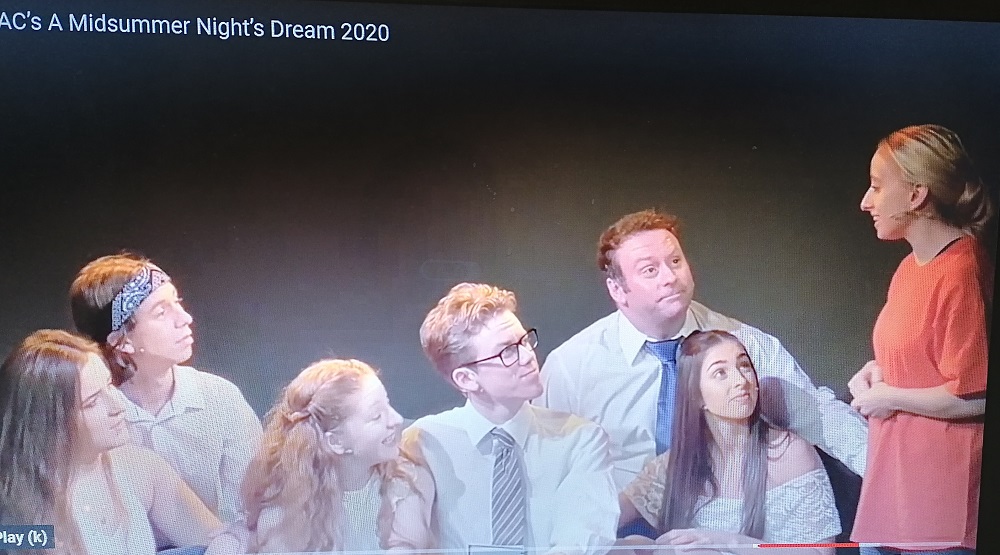 Anthony Horricks had appeared in A Midsummer Night’s Dream and ‘West End Up North’. For the ‘Ultimate Cover Show’ he was joined on stage by James Burke, Tempany Windsor, Jade Hamer and Maria Collins.
Anthony Horricks had appeared in A Midsummer Night’s Dream and ‘West End Up North’. For the ‘Ultimate Cover Show’ he was joined on stage by James Burke, Tempany Windsor, Jade Hamer and Maria Collins.
Anthony grabbed the audience’s attention straight away with his opening cover of an Elvis classic. He went on to sing tracks by the Beatles, The Calling, Take That and, I kid you not, Lady Gaga along with many others.
James sang the Michael Buble track ‘Home’ beautifully. Tempany had ‘When I was your Man’, a Bruno Mars number with a twist, just perfect. Maria and Jade, both accomplished singers, did solos too and several duets were performed including Sam Smith’s ‘Lay me Down’.
It was an impressive mix with something to suit everyone.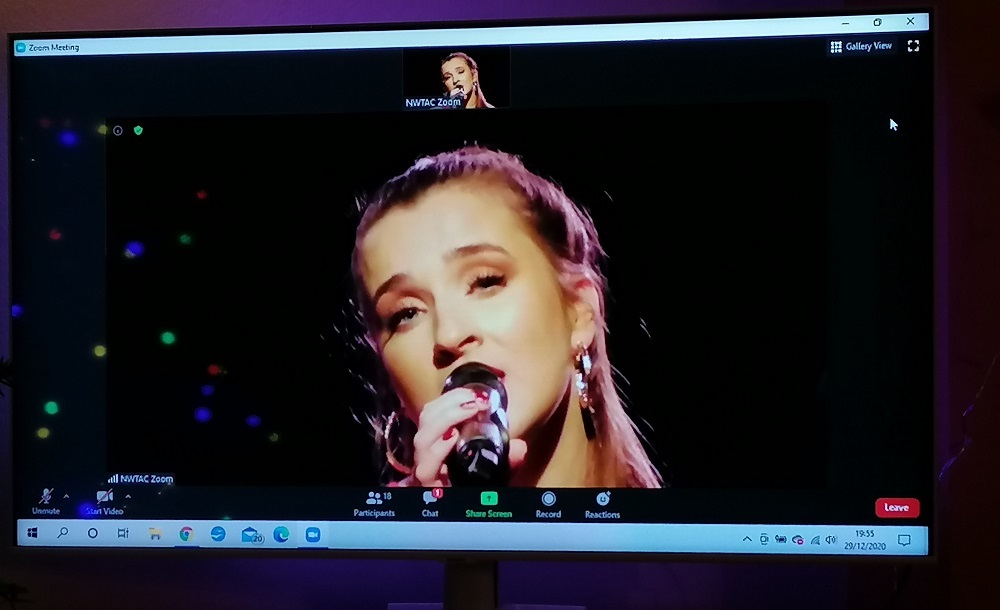 Between them they belted out over 20 hits and even popped back at the end for an encore. It was just brilliant and I’m so glad I got to watch it.
Between them they belted out over 20 hits and even popped back at the end for an encore. It was just brilliant and I’m so glad I got to watch it.
A few days later, NWTAC’s New Year’s Eve extravaganza saw 2021 in and they kissed good bye to one of the most challenging year’s they never expected to face.
The run up to Christmas is, of course, panto season. The theatre would have been packed to the rafters and rocking with families and children. But you haven’t missed out. Whilst Puss in Boots was ‘streamed’ on Christmas Eve, the live theatre version has only been postponed. All being well, it will be staged in the spring.
Details of future performances and ticket details can be found on NWTAC’s Facebook page by clicking here.
Information on all other aspects of the company, including the North West Stage School, theatre in education, theatre equipment hire and more, can be found on their website here.
To contact Beth Singh or Anthony Horricks, just click their names.
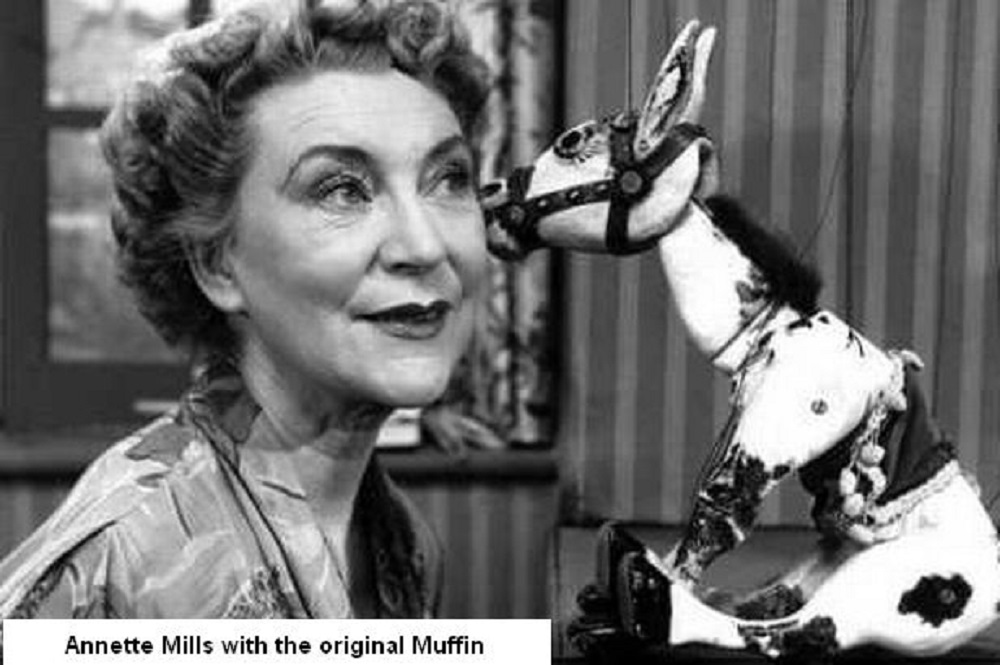 One year Father Christmas brought me a small chipboard kitchen dresser, probably made by someone my dad knew. I loved it, despite its ghastly shade of pink (war surplus paint perhaps?). The painted tin tea set from my grandparents sat on the open shelves, while jigsaws and games could be stored in the bottom cupboard.
One year Father Christmas brought me a small chipboard kitchen dresser, probably made by someone my dad knew. I loved it, despite its ghastly shade of pink (war surplus paint perhaps?). The painted tin tea set from my grandparents sat on the open shelves, while jigsaws and games could be stored in the bottom cupboard.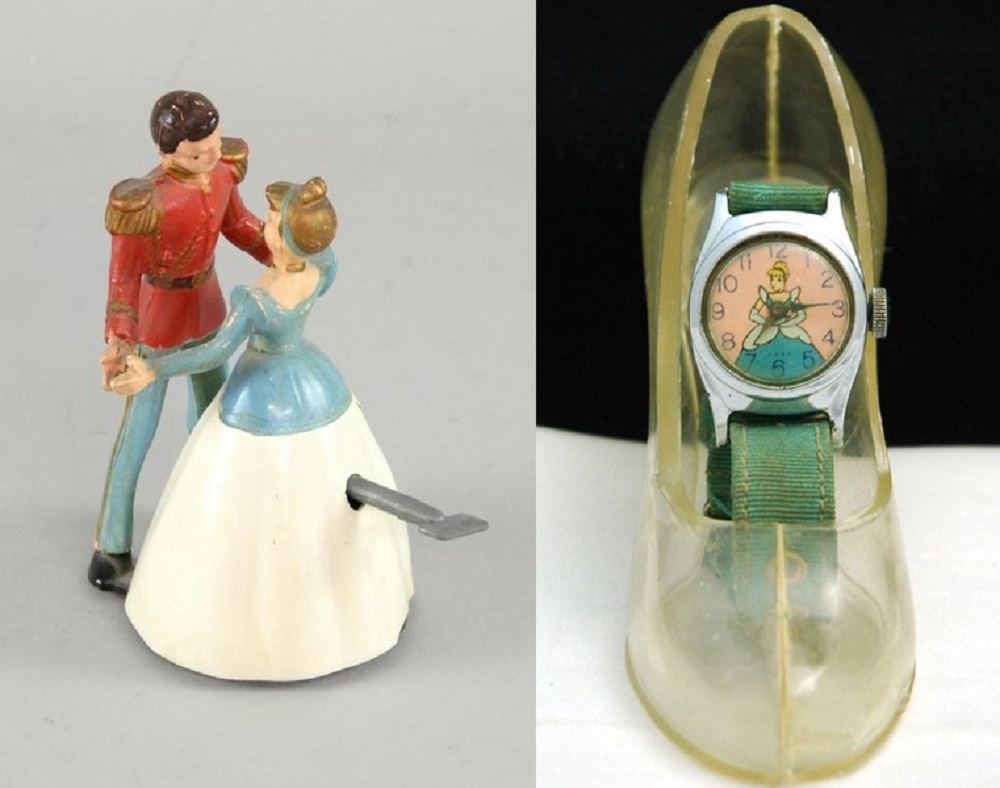 Whatever the current craze, it was sure to appear on most Christmas lists. The ones I remember best were yo-yos, hula hoops and roller skates. Maybe it was because I was shy, but it mattered very much that my present of desire was exactly ‘right’.
Whatever the current craze, it was sure to appear on most Christmas lists. The ones I remember best were yo-yos, hula hoops and roller skates. Maybe it was because I was shy, but it mattered very much that my present of desire was exactly ‘right’.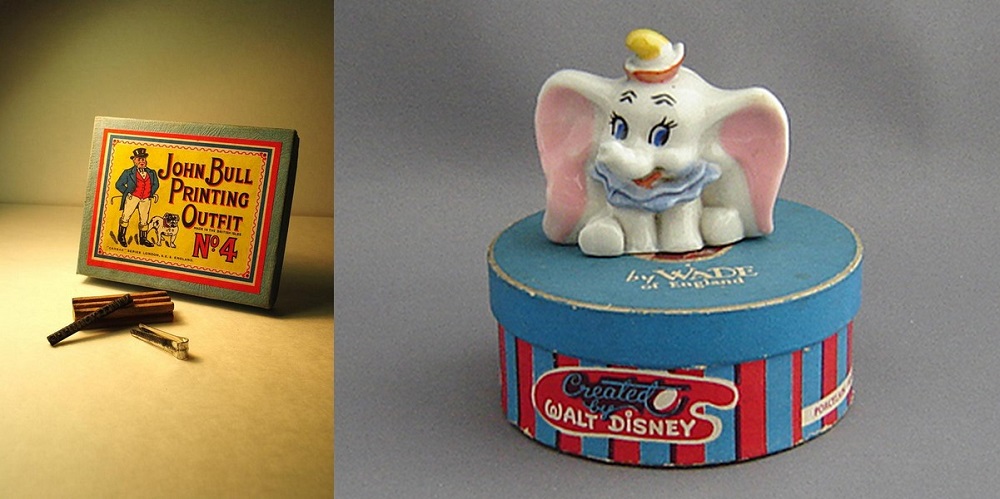 A compendium of games was up market, but sets of draughts, snakes and ladders, Ludo or even tiddly-winks were not to be sniffed at. Later in the decade, board games like Monopoly and Cluedo came along, but they were expensive, so stockings were more likely to contain a pack of cards.
A compendium of games was up market, but sets of draughts, snakes and ladders, Ludo or even tiddly-winks were not to be sniffed at. Later in the decade, board games like Monopoly and Cluedo came along, but they were expensive, so stockings were more likely to contain a pack of cards.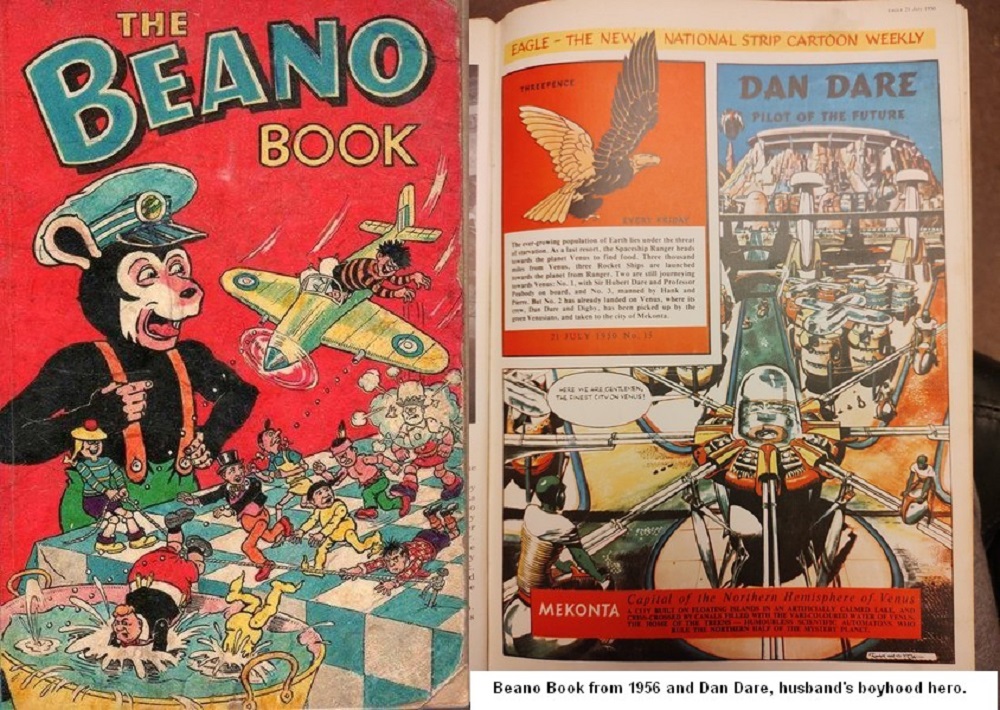 I invariably got one of the things specified on that list (or lists) I sent up the chimney. My parents would have been astounded to learn I felt the best bit of Christmas morning was opening my stocking. I loved those catch penny items such as chalks, crayons, puzzles, books and chocolate money, sold as stocking fillers.
I invariably got one of the things specified on that list (or lists) I sent up the chimney. My parents would have been astounded to learn I felt the best bit of Christmas morning was opening my stocking. I loved those catch penny items such as chalks, crayons, puzzles, books and chocolate money, sold as stocking fillers.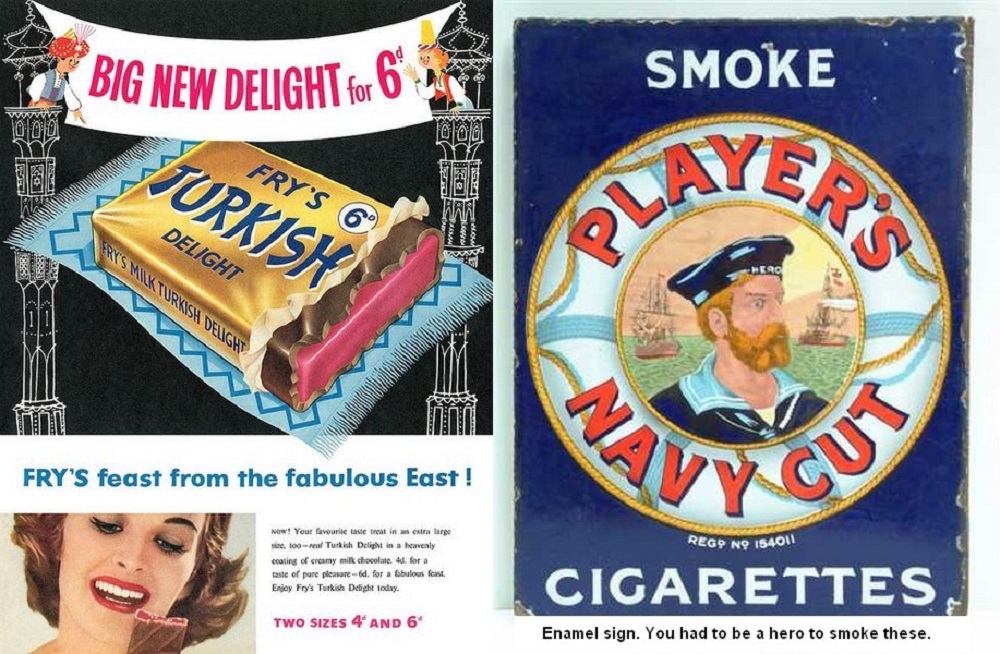 British advertising’s greatest leap forward came in 1956 with the inception of ITV. Not having the ‘technology’ to receive Granada at first, my sister and I were late joining the advert junkies.
British advertising’s greatest leap forward came in 1956 with the inception of ITV. Not having the ‘technology’ to receive Granada at first, my sister and I were late joining the advert junkies.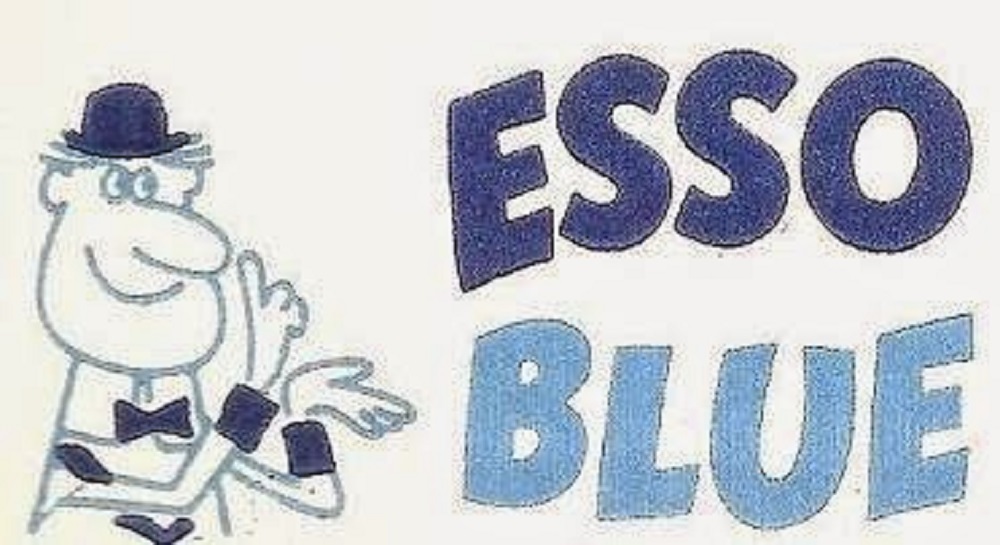 You could learn a lot from adverts. For instance, how to fortify the over forties, and that Turkish Delight is full of eastern promise. Before commercials, who knew Murray mints were the ‘too good to hurry mints’, or that everyone ought to ‘go to work on an egg’.
You could learn a lot from adverts. For instance, how to fortify the over forties, and that Turkish Delight is full of eastern promise. Before commercials, who knew Murray mints were the ‘too good to hurry mints’, or that everyone ought to ‘go to work on an egg’.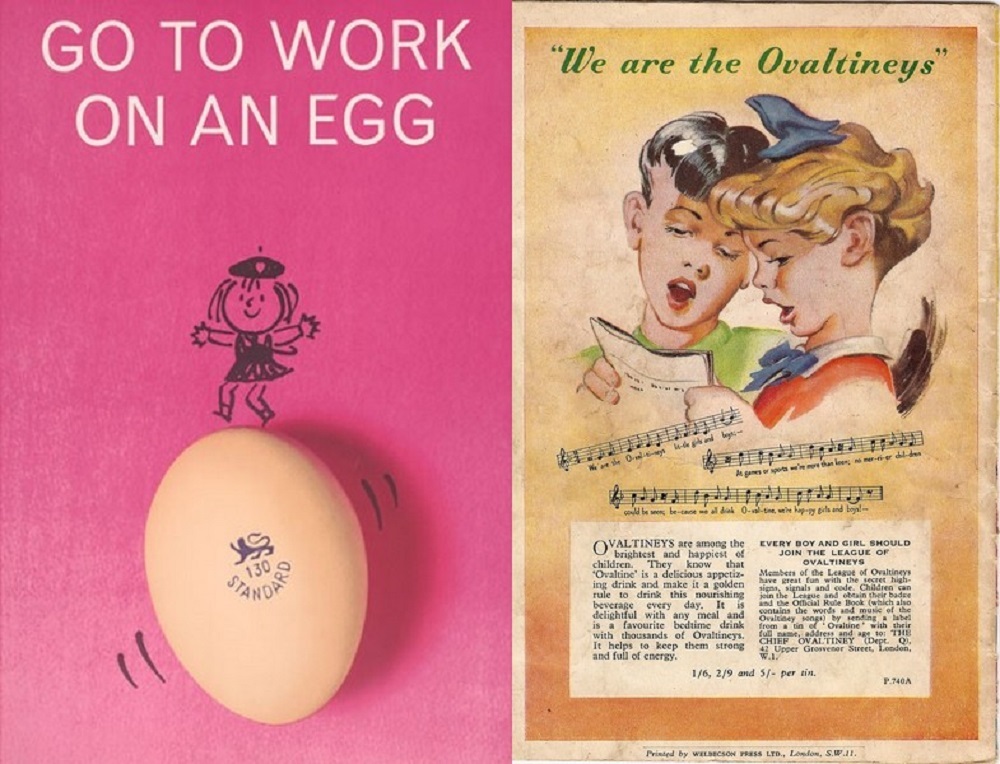 The early 20th century circulation wars between newspapers were responsible for an idea that agencies pinched in the fifties. The free gift phenomenon produced such promotions as Daz roses. Strange as it sounds, those free gifts were an unintentional perk of my father’s job as manager of a GPO canteen. Manufacturers invariably included the equivalent quantity of the current free gift with bulk orders. Initially, the canteen ladies and our neighbours welcomed the unlikely coloured, plastic roses, but soon it became impossible to give the damn things away.
The early 20th century circulation wars between newspapers were responsible for an idea that agencies pinched in the fifties. The free gift phenomenon produced such promotions as Daz roses. Strange as it sounds, those free gifts were an unintentional perk of my father’s job as manager of a GPO canteen. Manufacturers invariably included the equivalent quantity of the current free gift with bulk orders. Initially, the canteen ladies and our neighbours welcomed the unlikely coloured, plastic roses, but soon it became impossible to give the damn things away.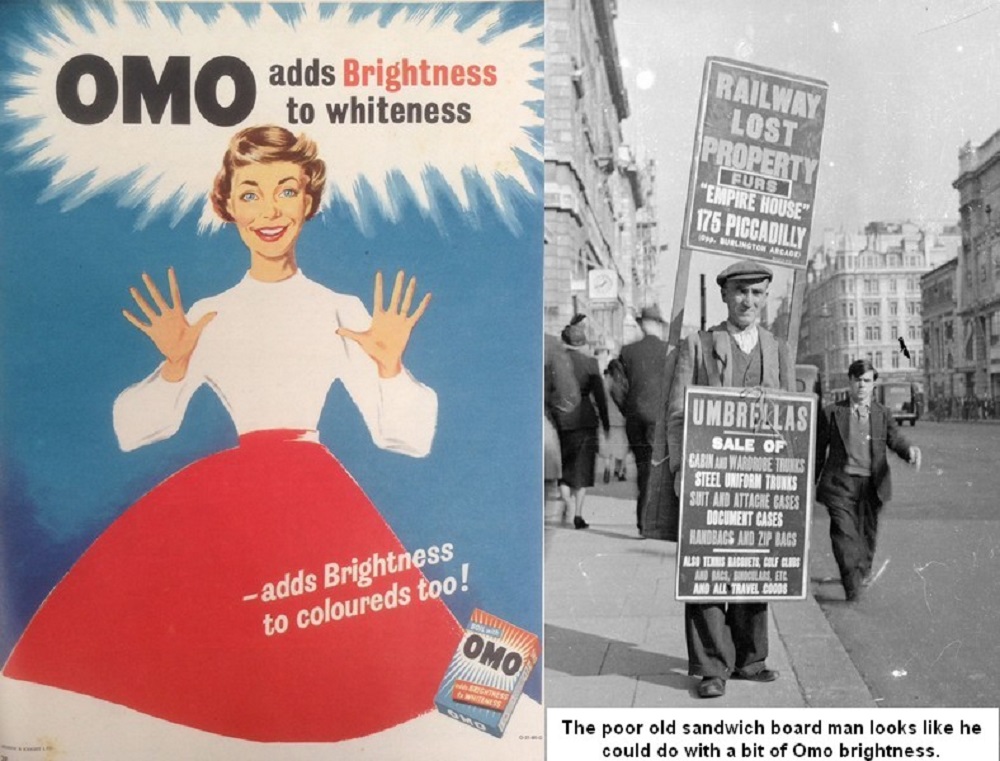 The trend toward pre-packaged goods was used as an advertising opportunity by manufacturers. The backs of packets soon featured prize winning competitions where the ‘decider’ was a slogan. It didn’t matter that the winner failed to set the advertising world alight, because dedicated sloganeers had already bought the product in order to enter.
The trend toward pre-packaged goods was used as an advertising opportunity by manufacturers. The backs of packets soon featured prize winning competitions where the ‘decider’ was a slogan. It didn’t matter that the winner failed to set the advertising world alight, because dedicated sloganeers had already bought the product in order to enter.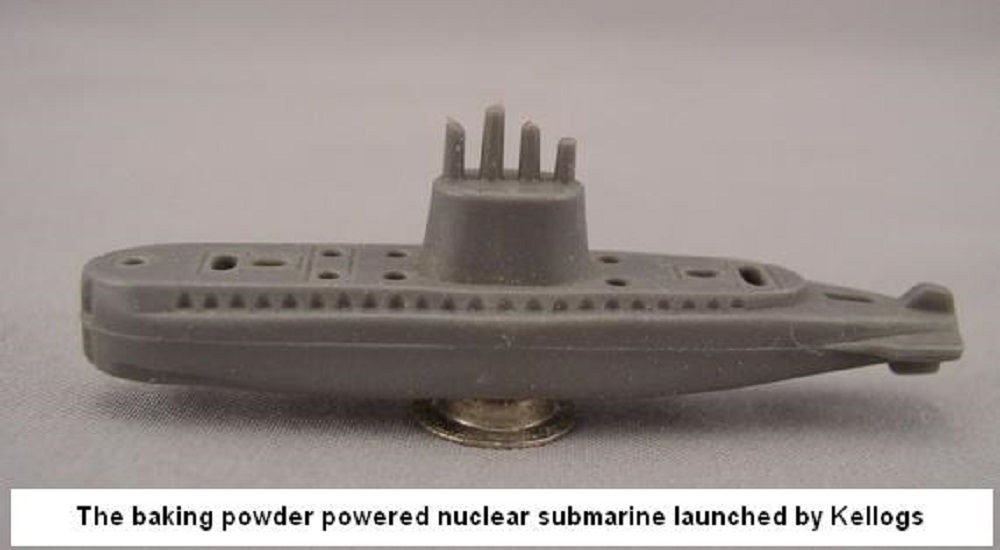 Then there were the ‘send away for’ offers. My husband has never got over the half crown (twelve and a half pence) he paid out for one that took six months to arrive. The correctly addressed package containing the, elastic powered, swamp buggy, had toured two continents before reaching Blackpool, only to break almost immediately.
Then there were the ‘send away for’ offers. My husband has never got over the half crown (twelve and a half pence) he paid out for one that took six months to arrive. The correctly addressed package containing the, elastic powered, swamp buggy, had toured two continents before reaching Blackpool, only to break almost immediately.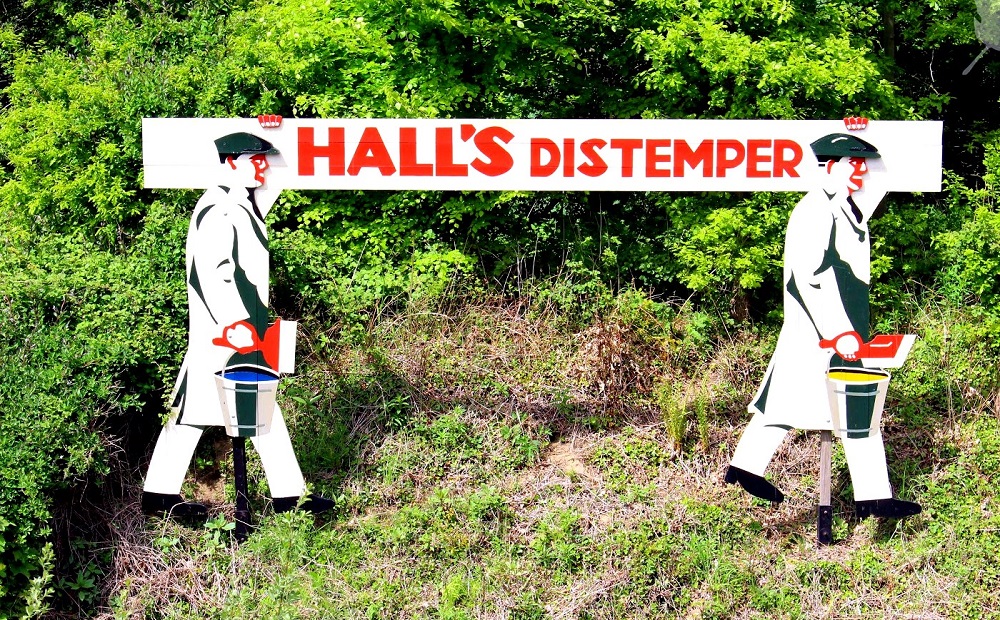 Travelling by train, my sister and I always looked out for a clever amalgamation of shop sign and billboard. It was a couple of workmen (up to twice life size) carrying a plank advertising Hall’s distemper (paint), as they apparently strolled across a field.
Travelling by train, my sister and I always looked out for a clever amalgamation of shop sign and billboard. It was a couple of workmen (up to twice life size) carrying a plank advertising Hall’s distemper (paint), as they apparently strolled across a field.